-
Report Prologue
-
Market Introduction
-
Definition 14
-
Scope of the Study 14
-
List of Assumptions 15
-
Market Structure
-
Research Methodology
-
Research Process 17
-
Primary Research
-
Secondary Research 19
-
Market Size Estimation 19
-
Forecast
-
Model 20
-
Market Dynamics
-
Introduction 22
-
Drivers 22
- Growing Prevalence of Diabetes and Chronic Wounds 22
- Rapidly
- Growing Innovations in Advanced Wound
-
Growing Geriatric Population 23
-
Therapy Devices 23
-
Restraint 23
- High Cost of Advanced Wound
-
Therapy Devices 23
-
Opportunity 24
- Growing Reimbursement for
-
Advanced Wound Therapy Devices 24
-
Market Factor Analysis
-
Value Chain
- R&D and Designing 26
- Manufacturing 26
- Post-Sales Review 26
-
Analysis 26
-
Distribution & Sales 26
-
Porter’s
- Bargaining Power of Suppliers 28
- Bargaining
- Threat of New Entrants 28
- Threat of Substitutes
- Intense Rivalry 28
-
Five Forces Model 27
-
Power of Buyers 28
-
Investment Opportunities 29
-
Pricing
-
Analysis 30
-
Advanced Wound Therapy Devices, By Type
-
Introduction
- Negative Pressure Wound Therapy Systems 33
- Pressure Relief
- Hyperbaric Oxygen Equipment 34
- Electrical Stimulation
- Others 35
-
Devices 33
-
Devices 35
-
Advanced Wound Therapy Devices Market, By
-
End User
-
Introduction 37
- Hospitals and Clinics 37
- Others 39
-
Home Care Settings 38
-
Global Advanced Wound Therapy
-
Devices Market, By Region
-
Introduction 41
-
Americas 42
-
Advanced
-
Wound Therapy Devices, By Type
-
Advanced Wound Therapy Devices Market, By End
-
User
-
Advanced Wound Therapy Devices, By Type
-
North America 44
-
Advanced Wound Therapy Devices Market, By End User
-
Advanced
-
Wound Therapy Devices, By Type
-
US 45
-
Advanced Wound Therapy Devices Market, By End
-
User
-
Advanced Wound Therapy Devices, By Type
-
Advanced
-
Canada 46
-
Wound Therapy Devices Market, By End User
-
Advanced
-
Wound Therapy Devices, By Type
-
South America 47
-
Advanced Wound Therapy Devices Market, By End
-
User
-
Europe 49
-
Advanced Wound Therapy Devices, By Type
-
Advanced
-
Wound Therapy Devices Market, By End User
-
Advanced
-
Wound Therapy Devices, By Type
-
Western Europe 51
-
Advanced Wound Therapy Devices Market, By End
-
User
-
Advanced Wound Therapy Devices, By Type
-
Advanced
-
Germany 53
-
Wound Therapy Devices Market, By End User
-
Advanced Wound
-
Therapy Devices, By Type
-
France 54
-
Advanced Wound Therapy Devices Market, By End User
-
Advanced Wound Therapy Devices, By Type
-
Advanced Wound
-
UK 55
-
Therapy Devices Market, By End User
-
Advanced Wound Therapy
-
Devices, By Type
-
Italy 56
-
Advanced Wound Therapy Devices Market, By End User
-
Spain 57
-
Advanced Wound Therapy Devices, By Type
-
Advanced Wound Therapy
-
Devices Market, By End User
-
Advanced
-
Wound Therapy Devices, By Type
-
Rest of Western Europe 58
-
Advanced Wound Therapy Devices Market, By End
-
User
-
Advanced Wound Therapy Devices, By Type
-
Eastern Europe 59
-
Advanced Wound Therapy Devices Market, By End User
-
Asia-Pacific 60
- Japan 62
-
Advanced Wound Therapy Devices, By Type
-
Advanced Wound Therapy Devices Market,
-
By End User
-
Advanced Wound Therapy Devices, By Type
-
Advanced Wound Therapy Devices Market, By End User
-
Advanced
-
Wound Therapy Devices, By Type
-
China 63
-
Advanced Wound Therapy Devices Market, By End
-
User
-
Advanced Wound Therapy Devices, By Type
-
Advanced
-
India 64
-
Wound Therapy Devices Market, By End User
-
Advanced
-
Wound Therapy Devices, By Type
-
Australia 65
-
Advanced Wound Therapy Devices Market, By End
-
User
-
Advanced Wound Therapy Devices, By Type
-
Republic of Korea 66
-
Advanced Wound Therapy Devices Market, By End User
-
Advanced Wound Therapy Devices, By Type
-
Advanced Wound Therapy Devices
-
Rest of Asia-Pacific
-
Market, By End User
-
Middle East & Africa 68
-
Advanced Wound Therapy
-
Devices, By Type
-
Advanced Wound Therapy Devices Market, By End User
-
Middle East 70
-
Advanced Wound Therapy Devices, By Type
-
Advanced Wound
-
Therapy Devices Market, By End User
-
Advanced Wound Therapy
-
Devices, By Type
-
Africa 71
-
Advanced Wound Therapy Devices Market, By End User
-
Competitive Landscape
-
Company Market Share Analysis 73
- Introduction
-
Company Profiles
-
Smith & Nephew 76
- Company
- Financial Overview 76
- Products/Services Offered
- SWOT Analysis 77
- Key Development 77
- Key Strategies
-
Overview 76
-
Mölnlycke Health Care AB 78
- Company Overview 78
- Financial Overview 78
- Products/Services Offered 78
- Key Developments 79
- Key strategy 79
-
SWOT Analysis 79
-
B. Braun Melsungen AG 80
- Company Overview 80
- Financial
- Products/Services Offered 81
- SWOT Analysis 81
- Key Developments 81
- Key strategy 81
-
Overview 80
-
ConvaTec Inc.
- Company Overview 82
- Financial Overview 82
- SWOT Analysis 83
- Key Developments
- Key Strategy 83
-
Products/Services Offered 82
-
Cardinal Health 84
- Company
- Financial Overview 84
- Products/Services Offered
- SWOT Analysis 85
- Key Developments 85
- Key
-
Overview 84
-
Strategy 85
-
KCI Licensing, Inc. 86
- Company Overview 86
- Financial Overview 86
- Products/Services Offered 86
- Key Development 86
- Key Strategy 87
- Company Overview 88
- Products/Services Offered 88
- SWOT
- Key Development 88
- Key Strategy 88
- Company Overview 89
- Financial
- Products/Services Offered 89
- SWOT Analysis 89
- Key Development 89
- Key Strategy 89
-
SWOT Analysis 86
-
Lohmann & Rauscher GmbH & Co. KG 88
-
Financial Overview 88
-
Analysis 88
-
DeRoyal Industries, Inc. 89
-
Overview 89
-
Medela AG 90
- Company Overview 90
- Financial Overview 90
- Products/Services
- SWOT Analysis 90
- Key Development 90
-
Offered 90
-
Key Strategy 90
-
Perry Baromedical 91
- Company Overview 91
- Financial Overview 91
- Products/Services Offered 91
- Key Development 91
- Key Strategy 91
-
SWOT Analysis 91
-
Triage Meditech Pvt. Ltd. 92
- Company Overview 92
- Products/Services Offered 92
- SWOT
- Key Development 92
- Key Strategy 93
- Company Overview 94
- Financial Overview 94
- Products/Services Offered 94
- SWOT Analysis 94
- Key Strategy 94
-
Financial Overview 92
-
Analysis 92
-
Sechrist 94
-
Key Development 94
-
Appendix
-
Discussion
-
Blue Print 96
-
List of Tables
-
LIST OF ASSUMPTIONS 15
-
TABLE
-
PRICING RANGE FOR DEVICE CATEGORY 30
-
GLOBAL ADVANCED WOUND THERAPY
-
DEVICES MARKET, BY TYPE 2020-2027 (USD MILLION) 32
-
GLOBAL ADVANCED
-
WOUND THERAPY DEVICES MARKET FOR NEGATIVE PRESSURE WOUND THERAPY SYSTEMS, BY REGION
-
GLOBAL ADVANCED WOUND THERAPY DEVICES MARKET
-
FOR PRESSURE RELIEF DEVICES, BY REGION 2020-2027 (USD MILLION) 34
-
GLOBAL
-
ADVANCED WOUND THERAPY DEVICES MARKET FOR HYPERBARIC OXYGEN EQUIPMENT, BY REGION
-
GLOBAL ADVANCED WOUND THERAPY DEVICES MARKET
-
FOR ELECTRICAL STIMULATION DEVICES, BY REGION 2020-2027 (USD MILLION) 35
-
TABLE
-
GLOBAL ADVANCED WOUND THERAPY DEVICES MARKET, BY END USER 2020-2027 (USD MILLION)
-
GLOBAL ADVANCED WOUND THERAPY DEVICES MARKET FOR HOSPITALS AND CLINICS,
-
BY REGION 2020-2027 (USD MILLION) 38
-
GLOBAL ADVANCED WOUND THERAPY
-
DEVICES MARKET FOR HOME CARE SETTINGS, BY REGION 2020-2027 (USD MILLION) 38
-
TABLE
-
GLOBAL ADVANCED WOUND THERAPY DEVICES MARKET, BY REGION 2020-2027 (USD MILLION)
-
AMERICAS: ADVANCED WOUND THERAPY DEVICES MARKET, BY REGION 2020-2027
-
(USD MILLION) 42
-
AMERICAS: ADVANCED WOUND THERAPY DEVICES MARKET,
-
BY TYPE 2020-2027 (USD MILLION) 43
-
AMERICAS: ADVANCED WOUND THERAPY
-
DEVICES MARKET, BY END USER 2020-2027 (USD MILLION) 43
-
NORTH AMERICA:
-
ADVANCED WOUND THERAPY DEVICES MARKET, BY COUNTRY 2020-2027 (USD MILLION) 44
-
NORTH AMERICA: ADVANCED WOUND THERAPY DEVICES MARKET, BY TYPE 2020-2027
-
(USD MILLION) 44
-
NORTH AMERICA: ADVANCED WOUND THERAPY DEVICES MARKET,
-
BY END USER 2020-2027 (USD MILLION) 45
-
US: ADVANCED WOUND THERAPY
-
DEVICES MARKET, BY TYPE 2020-2027 (USD MILLION) 45
-
US: ADVANCED WOUND
-
THERAPY DEVICES MARKET, BY END USER 2020-2027 (USD MILLION) 46
-
CANADA:
-
ADVANCED WOUND THERAPY DEVICES MARKET, BY TYPE 2020-2027 (USD MILLION) 46
-
TABLE
-
CANADA: ADVANCED WOUND THERAPY DEVICES MARKET, BY END USER 2020-2027 (USD MILLION)
-
SOUTH AMERICA: ADVANCED WOUND THERAPY DEVICES MARKET, BY TYPE 2020-2027
-
(USD MILLION) 47
-
SOUTH AMERICA: ADVANCED WOUND THERAPY DEVICES MARKET,
-
BY END USER 2020-2027 (USD MILLION) 48
-
EUROPE: ADVANCED WOUND THERAPY
-
DEVICES MARKET, BY REGION 2020-2027 (USD MILLION) 49
-
EUROPE: ADVANCED
-
WOUND THERAPY DEVICES MARKET, BY TYPE 2020-2027 (USD MILLION) 50
-
EUROPE:
-
ADVANCED WOUND THERAPY DEVICES MARKET, BY END USER 2020-2027 (USD MILLION) 50
-
WESTERN EUROPE: ADVANCED WOUND THERAPY DEVICES MARKET, BY COUNTRY 2020-2027
-
(USD MILLION) 51
-
WESTERN EUROPE: ADVANCED WOUND THERAPY DEVICES MARKET,
-
BY TYPE 2020-2027 (USD MILLION) 52
-
WESTERN EUROPE: ADVANCED WOUND
-
THERAPY DEVICES MARKET, BY END USER 2020-2027 (USD MILLION) 52
-
GERMANY:
-
ADVANCED WOUND THERAPY DEVICES MARKET, BY TYPE 2020-2027 (USD MILLION) 53
-
TABLE
-
GERMANY: ADVANCED WOUND THERAPY DEVICES MARKET, BY END USER 2020-2027 (USD MILLION)
-
FRANCE: ADVANCED WOUND THERAPY DEVICES MARKET, BY TYPE 2020-2027
-
(USD MILLION) 54
-
FRANCE: ADVANCED WOUND THERAPY DEVICES MARKET, BY
-
END USER 2020-2027 (USD MILLION) 54
-
UK: ADVANCED WOUND THERAPY DEVICES
-
MARKET, BY TYPE 2020-2027 (USD MILLION) 55
-
UK: ADVANCED WOUND THERAPY
-
DEVICES MARKET, BY END USER 2020-2027 (USD MILLION) 55
-
ITALY: ADVANCED
-
WOUND THERAPY DEVICES MARKET, BY TYPE 2020-2027 (USD MILLION) 56
-
ITALY:
-
ADVANCED WOUND THERAPY DEVICES MARKET, BY END USER 2020-2027 (USD MILLION) 56
-
SPAIN: ADVANCED WOUND THERAPY DEVICES MARKET, BY TYPE 2020-2027 (USD
-
MILLION) 57
-
SPAIN: ADVANCED WOUND THERAPY DEVICES MARKET, BY END USER
-
REST OF WESTERN EUROPE: ADVANCED WOUND
-
THERAPY DEVICES MARKET, BY TYPE 2020-2027 (USD MILLION) 58
-
REST OF
-
WESTERN EUROPE: ADVANCED WOUND THERAPY DEVICES MARKET, BY END USER 2020-2027 (USD
-
MILLION) 58
-
EASTERN EUROPE: ADVANCED WOUND THERAPY DEVICES MARKET,
-
BY TYPE 2020-2027 (USD MILLION) 59
-
EASTERN EUROPE: ADVANCED WOUND
-
THERAPY DEVICES MARKET, BY END USER 2020-2027 (USD MILLION) 59
-
ASIA-PACIFIC:
-
ADVANCED WOUND THERAPY DEVICES MARKET, BY COUNTRY 2020-2027 (USD MILLION) 60
-
ASIA-PACIFIC: ADVANCED WOUND THERAPY DEVICES MARKET, BY TYPE 2020-2027
-
(USD MILLION) 61
-
ASIA-PACIFIC: ADVANCED WOUND THERAPY DEVICES MARKET,
-
BY END USER 2020-2027 (USD MILLION) 61
-
JAPAN: ADVANCED WOUND THERAPY
-
DEVICES MARKET, BY TYPE 2020-2027 (USD MILLION) 62
-
JAPAN: ADVANCED
-
WOUND THERAPY DEVICES MARKET, BY END USER 2020-2027 (USD MILLION) 62
-
TABLE
-
CHINA: ADVANCED WOUND THERAPY DEVICES MARKET, BY TYPE 2020-2027 (USD MILLION)
-
CHINA: ADVANCED WOUND THERAPY DEVICES MARKET, BY END USER 2020-2027
-
(USD MILLION) 63
-
INDIA: ADVANCED WOUND THERAPY DEVICES MARKET, BY
-
TYPE 2020-2027 (USD MILLION) 64
-
INDIA: ADVANCED WOUND THERAPY DEVICES
-
MARKET, BY END USER 2020-2027 (USD MILLION) 64
-
AUSTRALIA: ADVANCED
-
WOUND THERAPY DEVICES MARKET, BY TYPE 2020-2027 (USD MILLION) 65
-
AUSTRALIA:
-
ADVANCED WOUND THERAPY DEVICES MARKET, BY END USER 2020-2027 (USD MILLION) 65
-
REPUBLIC OF KOREA: ADVANCED WOUND THERAPY DEVICES MARKET, BY TYPE 2020-2027
-
(USD MILLION) 66
-
REPUBLIC OF KOREA: ADVANCED WOUND THERAPY DEVICES
-
MARKET, BY END USER 2020-2027 (USD MILLION) 66
-
REST OF ASIA-PACIFIC:
-
ADVANCED WOUND THERAPY DEVICES MARKET, BY TYPE 2020-2027 (USD MILLION) 67
-
TABLE
-
REST OF ASIA-PACIFIC: ADVANCED WOUND THERAPY DEVICES MARKET, BY END USER 2020-2027
-
(USD MILLION) 67
-
MIDDLE EAST & AFRICA: ADVANCED WOUND THERAPY
-
DEVICES MARKET, BY REGION 2020-2027 (USD MILLION) 68
-
MIDDLE EAST &
-
AFRICA: ADVANCED WOUND THERAPY DEVICES MARKET, BY TYPE 2020-2027 (USD MILLION) 69
-
MIDDLE EAST & AFRICA: ADVANCED WOUND THERAPY DEVICES MARKET, BY END
-
USER 2020-2027 (USD MILLION) 69
-
MIDDLE EAST: ADVANCED WOUND THERAPY
-
DEVICES MARKET, BY TYPE 2020-2027 (USD MILLION) 70
-
MIDDLE EAST: ADVANCED
-
WOUND THERAPY DEVICES MARKET, BY END USER 2020-2027 (USD MILLION) 70
-
TABLE
-
AFRICA: ADVANCED WOUND THERAPY DEVICES MARKET, BY TYPE 2020-2027 (USD MILLION)
-
AFRICA: ADVANCED WOUND THERAPY DEVICES MARKET, BY END USER 2020-2027
-
(USD MILLION) 71
-
-
List of Figures
-
GLOBAL
-
ADVANCED WOUND THERAPY DEVICES MARKET: MARKET STRUCTURE 15
-
RESEARCH
-
PROCESS 17
-
FIGURE 2TOP-DOWN & BOTTOM-UP APPROACH 20
-
FIGURE
-
MARKET DYNAMICS: ANALYSIS OF THE GLOBAL ADVANCED WOUND THERAPY DEVICES MARKET
-
VALUE CHAIN: GLOBAL ADVANCED WOUND THERAPY DEVICES MARKET 26
-
PORTER’S FIVE FORCES ANALYSIS: GLOBAL ADVANCED WOUND THERAPY DEVICES
-
MARKET 27
-
GLOBAL ADVANCED WOUND THERAPY DEVICES MARKET, BY TYPE 2020
-
& 2027 (USD MILLION) 32
-
GLOBAL ADVANCED WOUND THERAPY DEVICES
-
MARKET, BY END USER 2020 & 2027 (USD MILLION) 37
-
GLOBAL ADVANCED
-
WOUND THERAPY DEVICES MARKET, BY REGION 2020 & 2027 (USD MILLION) 41
-
FIGURE
-
AMERICAS: ADVANCED WOUND THERAPY DEVICES MARKET SHARE, BY REGION 2020 (%) 42
-
NORTH AMERICA: ADVANCED WOUND THERAPY DEVICES MARKET SHARE, BY COUNTRY
-
EUROPE: ADVANCED WOUND THERAPY DEVICES MARKET SHARE,
-
BY REGION 2020 (%) 49
-
WESTERN EUROPE: ADVANCED WOUND THERAPY DEVICES
-
MARKET SHARE, BY COUNTRY 2020 (%) 51
-
ASIA-PACIFIC: ADVANCED WOUND
-
THERAPY DEVICES MARKET SHARE, BY COUNTRY 2020 (%) 60
-
MIDDLE EAST
-
& AFRICA: ADVANCED WOUND THERAPY DEVICES MARKET SHARE, BY REGION 2020 (%) 68
-
GLOBAL ADVANCED WOUND THERAPY DEVICES MARKET, MARKET SHARE ANALYSIS

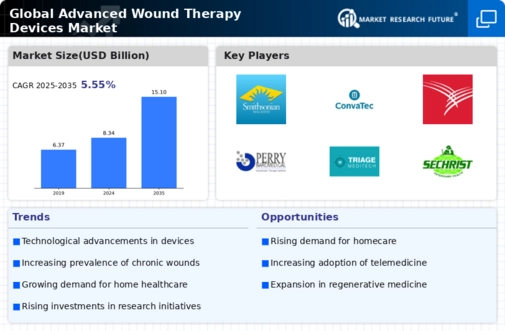

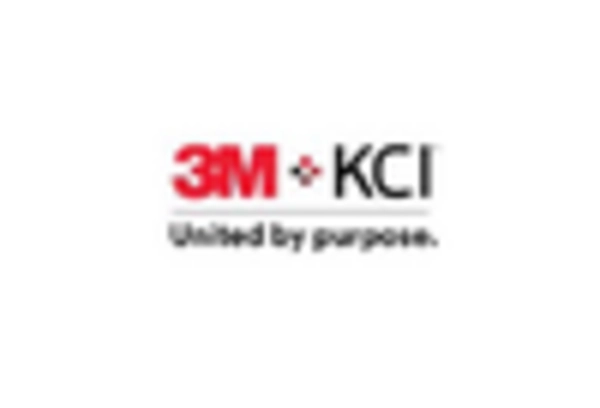
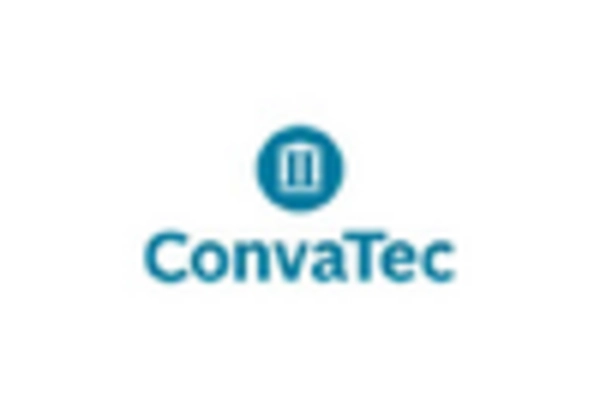
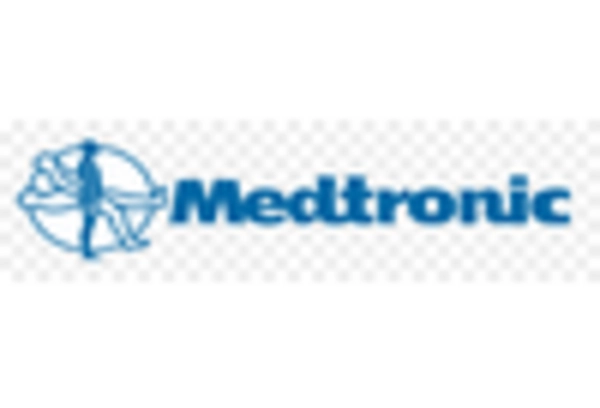
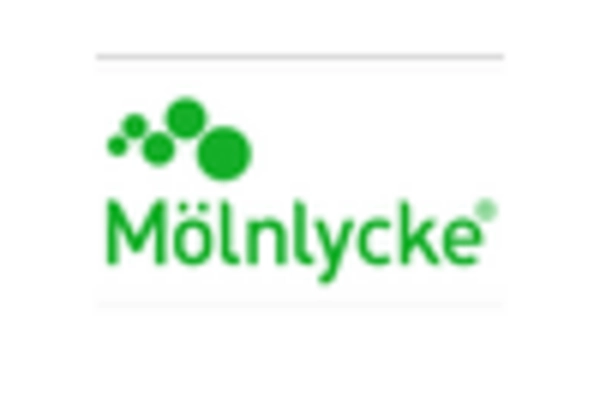










Leave a Comment